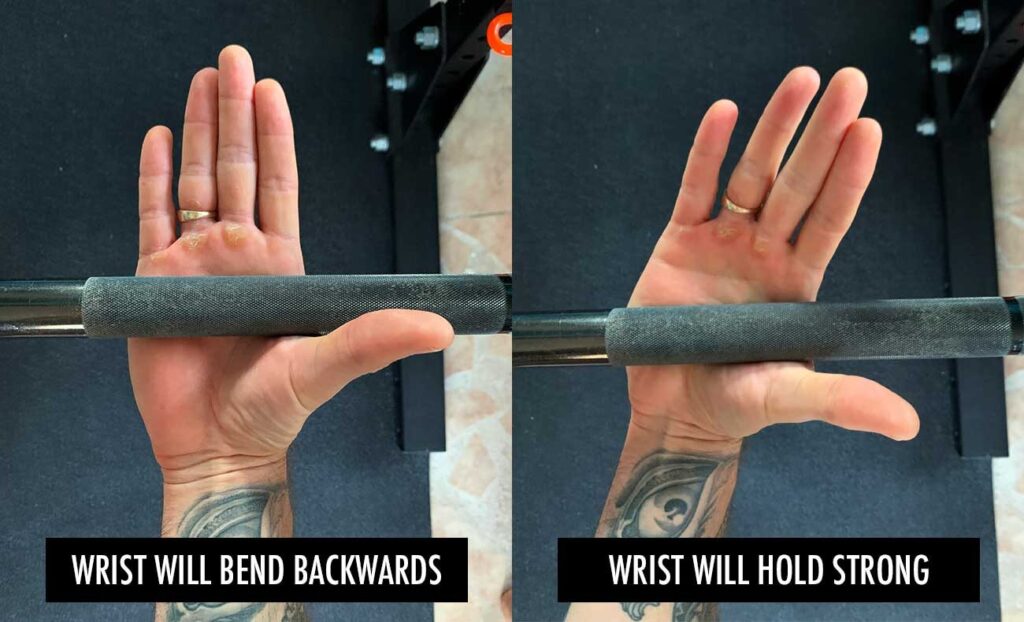Bench Press Disasters for Safer Stronger Lifts – The bench press is one of the most fundamental exercises for developing upper-body strength, but improper technique can lead to serious injuries, failed lifts, and stalled progress. Many lifters make common mistakes that compromise both safety and effectiveness. Understanding proper form and avoiding these critical errors will allow for safer, more efficient strength gains.
Poor Grip Placement
Wrong grip width can put unnecessary stress on the wrists, elbows, and shoulders. Too wide a grip stresses the shoulder joints and increases the risk of injury, while too narrow a grip places the load on the triceps, limits chest activation, and reduces pressing power.

The ideal grip width places hands just outside shoulder width for maximum force production while preserving joint integrity. Also important is wrist positioning – neutral wrists stacked directly above the elbows for stability and to relieve strain.
Flaring the Elbows Too Much

Excessively flaring the elbows compromises the shoulder joints, increasing the risk of rotator cuff injuries. The safest and most effective elbow positioning involves tucking them at a 45-degree angle relative to the torso. This alignment reduces stress on the shoulders while maximizing pressing power.
Strengthening movement patterns through technique-focused drills, such as slow eccentric reps and banded presses, reinforces proper elbow positioning and reduces injury risks.
Arching the Back Incorrectly
A moderate arch in the back is beneficial for maintaining a stable pressing position, but excessive overextension can lead to lower back strain. Powerlifters use a controlled arch to reduce the range of motion and maximize leverage, but an extreme arch often results in lumbar hyperextension and increased injury risk.

Proper spinal alignment should prioritize core engagement and glute activation to maintain stability while ensuring the lower back remains supported.
Bouncing the Bar Off the Chest
Bouncing the bar off the chest not only reduces muscle activation but also increases the likelihood of injury. This uncontrolled movement places unnecessary stress on the sternum and shoulder joints.
A controlled descent with a slight pause at the bottom ensures proper muscle engagement and forces the chest, shoulders, and triceps to generate the necessary force for the press. Implementing a steady tempo, such as lowering the bar for two seconds and pressing with explosive force, enhances strength development while reinforcing safe mechanics.

Not Using a Spotter
Lifting heavy weights alone poses a serious safety risk when approaching maximal loads. A spotter assists if the lifter misses a rep, preventing the bar from getting stuck on the chest.
Communication with a spotter before each set is essential so they know the level of assistance required. Safeguards when training alone include putting together a power rack with safety pins or using dumbbells instead of barbells.
Neglecting the Full Range of Motion
Performing half-reps on the bench press limits muscle development and reduces overall strength gains. A full range of motion, where the bar reaches and presses the chest to full lockout, maximizes pectoral activation and ensures balanced muscle growth.
Lifters struggling with depth should work on mobility and flexibility exercises, such as thoracic spine extensions and pec stretches, to improve their range of motion. Strengthening the bottom portion of the lift through paused reps can also enhance pressing power.
Skipping a Proper Warm-Up
Cold muscle can become sore and tender, so warm up first for safe bench pressing. Warming up helps improve blood flow to muscles and joints and prepares the nervous system for heavy lifting.
Proper warming up should include dynamic stretching, mobility drills, and activation exercises like band pull-aparts and lightweight presses. Preparing the shoulders and triceps leads to smoother movement mechanics and lowers the risk of injury.
Ignoring Progressive Overload Principles
Adding too much weight too quickly often leads to poor form and increased injury risk. Progressive overload should be implemented in a controlled manner, with gradual weight increases to allow the muscles and joints to adapt.
A structured program that incorporates periodization ensures steady strength gains without excessive strain. Consistent progress tracking and adherence to structured weight increments prevent unnecessary plateaus and setbacks.
Lifting Without Engaging the Lower Body
Leg drive plays a crucial role in a strong and stable bench press. Many lifters neglect lower-body engagement, resulting in reduced pressing power and overall instability.
Proper foot placement—flat on the ground with firm contact—helps generate force from the legs, transferring energy through the entire body. Strengthening leg drive through drills like paused bench presses and isometric holds can significantly improve pressing performance.
Neglecting Recovery and Shoulder Health
Overuse injuries and chronic shoulder pain often result from inadequate recovery strategies. Rest days, mobility work, and targeted shoulder stability exercises are essential for maintaining joint health.
Incorporating external rotation exercises, bandwork, and proper post-workout stretching reduces the risk of impingement and other shoulder-related issues. Recognizing early signs of overuse, such as persistent discomfort or decreased performance, allows lifters to adjust training volume before injuries become severe.
Frequently Asked Questions
How can I prevent shoulder injuries while bench pressing?
Proper elbow positioning, avoiding excessive flare, and incorporating shoulder mobility work help reduce strain on the shoulder joints. Strengthening the rotator cuff and stabilizing muscles also minimizes injury risks.
Why does my bench press form feel uncomfortable?
Discomfort often stems from a poor setup, a lack of mobility, or incorrect positioning. Ensuring proper grip width, engaging the lower body, and performing adequate warm-ups can improve form and overall comfort.
How can I increase my bench press without getting injured?
Progressive overload, maintaining strict form, engaging the lower body, and allowing adequate recovery time are key to increasing bench press strength safely. Avoiding ego lifting and focusing on controlled movements also prevents unnecessary strain.


